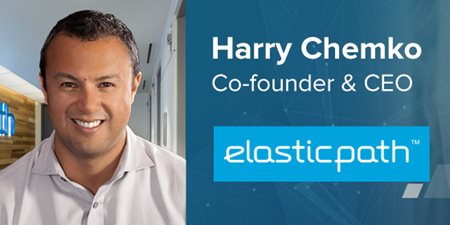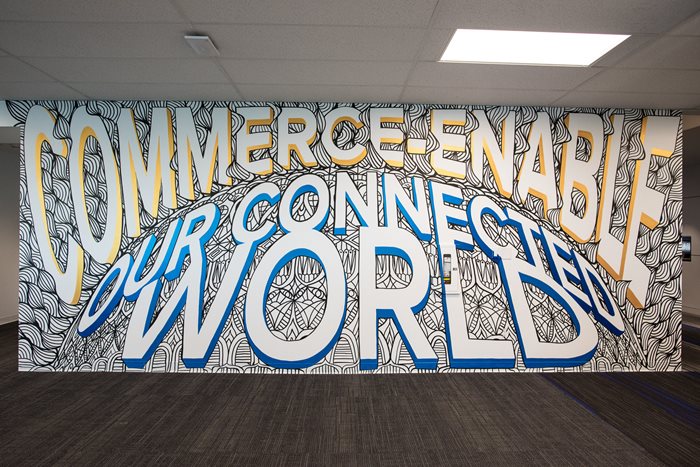Elastic Path Announces $43M Series B Growth Investment
Elastic Path, one of the first companies to understand and execute on the need for an API-oriented  commerce solution for enterprises has enjoyed an exciting month of June. After being named just over a week ago as a Visionary in the Gartner Magic Quadrant for Digital Commerce for the third year in a row, furthest in completeness of vision and highest in ability to execute they announced today they have also closed a $43 million Series B growth investment. Led by Sageview Capital with participation from current investors, Yaletown Partners and BDC Venture Capital, this investment brings the total raised by the company to an impressive $63 million.
commerce solution for enterprises has enjoyed an exciting month of June. After being named just over a week ago as a Visionary in the Gartner Magic Quadrant for Digital Commerce for the third year in a row, furthest in completeness of vision and highest in ability to execute they announced today they have also closed a $43 million Series B growth investment. Led by Sageview Capital with participation from current investors, Yaletown Partners and BDC Venture Capital, this investment brings the total raised by the company to an impressive $63 million.
Prior to today’s release, I had the opportunity to engage in a conversation with Elastic Path’s Founder and CEO Harry Chemko to discuss this announcement, how the current market trends are shaping the innovation within their platform and what this latest round of funding means for the organization moving forward.
Their Early Recognition of the Need for API-First
In the press release, Elastic Path’s success was attributed to “being due in part to incumbent vendors struggling under the weight of their now decades old technology” but recognizing the growing chasms in a market is one thing, being able to effectively address them is another. Having helped some of the world’s best brands from all over the world generate over $60 billion in revenue to date, I would say they’re doing something right in that respect so of course, my first question for Harry was regarding the thought process behind the platform allowing it to rise to such a standing amidst the mammoth vendors in the enterprise commerce space:
“Back in 2011, we took a hard look at how the commerce market was evolving, and at the time I also hired a CTO named Sal Visca. He and I really shared this vision of how to implement those front-end experiences in commerce technology in an easier way. We really took a look at what everyone was doing in the market back then and everyone was really focused on the webstore and maybe a mobile store so the commerce platforms were all really built around that concept and, they were just one single application.
In taking a look at the market we thought, in 5 to 10 years from now it’s going to be so different, people are going to want to embed commerce in those day to day interactions that those brands and companies have with customers and, they may have dozens or even hundreds of those different touch points where they want to embed those commerce interactions and in that day to day flow of customer engagement and the paradigm of that single application just didn’t work very well. We re-architected the platform based on that and we stopped developing front end features and built everything as an API first platform.
This was also 2011 which was pretty early, and pretty risky for us but we were very excited and we built it in such a way that it really separated front-end and back-end development. Content teams have lots of people creating content management systems or different touchpoints on the front-end but then the back-end is where you’ve got IT teams worried about scalability and processing hundreds of thousands of transactions an hour and managing large numbers of items in your catalogue, those types of things can still be very bulletproof in terms of the enterprise grade. So, we launched that to market in 2012 to crickets, total crickets, we were just way too early because everyone was just concerned about getting their webstores up but it did show the power of things.
We then started working with a variety of content management systems like Adobe and Acquia and we work with a lot more now, but we had customers starting to build different front-ends and touch points beyond that, people looking at React storefronts, angular, headless content management systems so really most of our growth has been in the last few years when most of that stuff started to catch on”
I made the point to Harry that later on a lot of other commerce platforms were striving to catchup to this trend but Elastic Path seemed to already be there:
“It’s a bit of a nuance, it gets a bit technical but it’s an important one. How the other platforms did it is they took what they already had and they opened up REST APIs on top of it that were the headless commerce platform now but in those situations, if you want to make changes to the underlying commerce platform you still have to rebuild all of those different touchpoints which is okay if you have one or two but, if you haven’t created that separation between front-end and back-end and those APIs are not solid you’ve just exacerbated that level of complexity.
The way we built it was we created that whole different layer that really created that separation of the front-end and back-end so you’re not playing around with a lot of business logic in the front-end, it’s all in the API platform and so, if you have thirty different touchpoints and you go to change some things, then you don’t have to change any of those touch points.”
Gen Z and IoT Light the Way for Innovation
One thing I’ve seen more recently with vendors and hope to see a lot more of is their way of explicitly pointing to the specific market trends driving the innovation of their product because with all the new capabilities being rolled out, aligning them with specific trends bombarding businesses might be the best way to show their power in advancing a business’ digital presence or strategy. In the press release, I was pleased to see Elastic Path had done this by pointing out two of the major trends influencing their product: first the estimated 40% of the consumer segment the first digitally native generation, Gen Z, will account for by 2020 and the additional ‘coming of age’ we will see with IoT, giving way to many new and different touchpoints for brands in reaching their customers.
“The way we look at how touchpoints are coming is that we don’t really get into a lot of the individual ones because we kind of built a platform for a future where we don’t know what those are. One of the stats I always reference is right now there are about 10 billion internet connected devices out there, the vast majority of those are still computers, laptops and mobile phones but when you look forward a few years to 2020, there will be more than 24 billion internet connected devices and most of those won’t be mobile phones or laptops or things like that. It’s more than doubling all of the new ways to interact.
Brands and companies out there today are thinking about their commerce platform for today but the real leading edge ones are thinking ‘well that’s fine for today, we can get our web store up and maybe we’re even doing some chatbots and maybe some voice or magic mirror or something like that’ but if they’re not thinking about 5 years from today, there is going to be a bunch of things we haven’t considered yet, how do they make sure they don’t have to be doing big commerce projects in the future, how do they make sure that they’re set up well so they don’t have to change things then.”
To think in just two years the number of internet connected devices will more than double, anyone who has a misconception about the power of IoT needs to get up to speed quickly and understand it doesn’t just exist in the B2C space. As Harry points out, they are already seeing valuable implications in the B2B space:
“There are even industrial use cases where we’ve got companies that are looking to say, we’ve got this piece of machinery and want it to just know when to schedule service updates and it will know when I need to replace parts and have it interact with the commerce platform right away. But it’s funny because I think the human brain can only think linearly, but how things are actually happening is a bit more exponentially so if you take a point in time a year from now, ways customers are going to be interacting with brands, it’s going to be a whole step change.”
Towards the end of the press release, it was noted the funds recently invested in Elastic Path will be allocated towards accelerating research and development but I wanted to hear if there were any specific areas Elastic Path would be focusing on:
“A lot of what we’re focusing on right now is continuing to innovate on the architecture of the platform so we make it really easy to continue to integrate with touchpoints but there are some other areas around B2B we’re really focused on right now. The B2B market in commerce, it’s a very large market but has a lot to go, about 30% of our customers today are B2B, and we really see that as a big opportunity. We have releases coming up that will have more and more B2B functionalities so we can start to take a larger portion of that market share.”
And, just because while on the topic of B2B or even B2C, I love to ask experts what they think the main differences are, I posed the question to Harry to hear his thoughts:
“A couple things on B2B that are different are things like workflow and organizational stuff. So, you’ve got a company that may have a lot of different buyers that need to do approvals, that need to do roll off a bunch of orders into one order, its account based hierarchies and workflows, charging to accounts, reordering and things like that, that’s more on the organizational side. On the other side is on the catalogues themselves which means folks in the B2B world may have things like contract pricing to a specific contract or point to a specific customer, have segments of customers with different pricing or even different rules, if you buy a certain amount of product over a period of time, pricing can change and adjustments get made to accounts. Those are the situations we are seeing in B2B where people are most looking for change.”
What Has Driven their Success?
Considering the great success Elastic Path has seen in the last few years and having already gained a great understanding from Harry on the technology/market influence fueling that, I wanted to know as Founder and CEO of the company, what were the intrinsic elements of the company he holds in place to aid in the innovation and value created by his team over the years?
“We have four core values as a company and we’ve actually had them since the very early days when we started Elastic Path. What I always tell people, especially now as we’re doing a lot of hiring and for the people already here, you are the ambassadors of our culture and for upholding the values going forward which helps to instill that in the new folks coming in. From a hiring process you do a lot of work to make sure that the people you are hiring meet up with those as well.
Our core values are one, be open, be transparent with what you’re doing. The heritage of Elastic Path is built on a lot of open source software components and that’s always been really important to us, that we work well in that community.
The second one is be remarkable, which is all about doing things that are worth talking about and that to us has been around being really happy to be leading edge, or bleeding edge, similar to what I was saying earlier about us being early. I like to instill that we’re not afraid to be early and to really push the envelope on technology and how we apply technology.
Our third core value would be around the customer which means put yourself in the customer’s shoes with everything that you’re doing and to us our customers are both our end customers as well as our partners, both the system integrators that implement our software and the ISBs that we work with.
Finally, the fourth one is be the team, I know that can be what seems basic at times but I think it’s fairly important to always be talking about that, and having high performing teams. If you have them the output is way bigger than if you don’t have high-performing teams so that’s something we focus on a lot here at Elastic Path, making sure people are aligned, have a shared vision, feel like they have really good purpose for what they’re doing.
That said, we’re kind of looking for a specific kind of person at Elastic Path, we’re looking for people that really want to be part of a growing technology story and people that want to work on that innovative, market leading stuff but also people who just want to work with great brands, we work with some fantastic customers and being able to point to something and say, ‘I was part of that’”

Ending Notes
Admittedly, I have a soft spot for the commerce world and my conversation with Harry on the innovations around the corner did nothing but amplify that. As a marketer I am driven by understanding a variety of consumers and increasing their likelihood to engage with various touchpoints but one might argue the commerce transaction, both online and offline could be defined as the ultimate moment of engagement, only surpassed by a customer having an impactful enough experience to transcend into an advocate. Therein lies the challenge that charms me so. The transaction itself signals a win of engagement through a large percentage of the touchpoints the consumer encountered along their journey, culminating in them deciding the product or service offered was worth acquiring.
Through his understanding of IoT and how the way we define and leverage touchpoints will massively evolve in the next few years, I learned a ton from Harry on how the consumer engagement game will change as we move to an even more connected world.

Laura Myers
A digital business, marketing and social media enthusiast, Laura thrives on asking unique, insightful questions to ignite conversation. At an event or remotely, she enjoys any opportunity to connect with like-minded people in the industry.